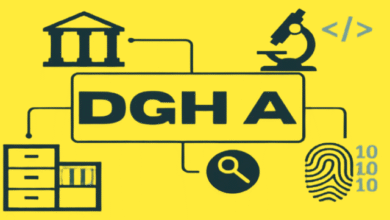Protocolo Operacional Padrao: The Complete Guide to Creating Efficient and Consistent Processes

Introduction
Every organization—large or small—faces the same challenge: how to ensure that tasks are done right, consistently, and efficiently. That’s where a Protocolo Operacional Padrão (often abbreviated as POP) comes in. In essence, POP is the Portuguese equivalent of a Standard Operating Procedure (SOP). This guide will show you how to build, implement, and maintain a strong POP system that drives reliability and clarity throughout your operation.
What Is a Protocolo Operacional Padrão?
A Protocolo Operacional Padrão is a formal, documented procedure that lays out exactly how a specific task or process should be carried out, step by step. Its purpose is to eliminate ambiguity and to ensure that everyone executes the same task in the same way, every time. In practice, POPs serve as internal guides that define responsibilities, tools, safety considerations, and the proper sequence of steps.
Why POPs Matter: Key Benefits
First, a well-crafted POP reduces errors and variability. When everyone follows the exact instructions, you get more predictable results. Second, POPs increase efficiency—no more time wasted debating the “right way” to do something. Third, they simplify training and onboarding: new employees can learn from documentation rather than relying solely on verbal instructions. Finally, POPs strengthen accountability because roles and expectations are clearly defined.
Core Elements of an Effective POP
Every solid protocolo operacional padrão should include these components:
- Purpose and scope: What this POP is for, and which roles or situations it covers.
- Required materials and tools: What equipment, documents, or software do you need to follow the POP?
- Step-by-step instructions: A numbered or bulleted sequence of actions, written clearly.
- Safety, Compliance, and Notes: Any warnings, legal or regulatory considerations, and quality checks.
- Roles and responsibilities: Who is responsible for which parts of the process—execution, oversight, verification.
- Revision history and update frequency: Version numbers, dates, and a schedule or trigger for updates.
How to Create Your POP: Step by Step
1. Select priority processes
Focus on tasks that are repeated often, carry risk, or directly affect quality. These yield the highest ROI.
2. Consult your frontline team
Include people who actually execute the task—they’ll spot pitfalls or shortcuts you might miss.
3. Map the existing process
Use flowcharts or diagrams to visualize each step, branch, and decision point.
4. Write the first draft
Convert your map into clear, sequential instructions. Use simple language, avoid jargon, and break complex steps into substeps.
5. Add checks, safety, and decision rules
Insert quality checks or branching instructions for different scenarios. Indicate what to do when something goes wrong.
6. Test the POP in real life
Run a pilot with one team or process, gather feedback, and refine it accordingly.
7. Approve, publish, and distribute
Use version control. Ensure everyone has access—digital or printed—and knows this is the “official” procedure.
8. Train your team
Hold workshops or drills. Ensure that people practice following the POP under supervision until they have internalized it.
Implementation Tips & Best Practices
Keep language concise—don’t write a novel. Use visuals (flowcharts, diagrams, photos) when helpful. Version everything and date your updates. Use a “six-eyes” review (writer, reviewer, approver) before finalizing. Maintain a feedback loop so users can flag when a POP is outdated or unclear. Schedule periodic reviews, such as annually or whenever a process undergoes a change.
Common Pitfalls to Avoid
One common mistake is making the POP too generic, resulting in vague statements that leave room for interpretation. Another is failing to revise old POPs when technology or business logic changes. Also, be aware of poor training—if people don’t understand the POP, they will likely ignore it. Finally, don’t centralize control too tightly; empower teams to suggest improvements.
Auditing & Continuous Improvement
Schedule audits to measure whether people are following the POP and whether its outcomes meet expectations. Utilize key performance indicators (KPIs) such as error rates, cycle times, or customer complaints. Collect ongoing feedback from users. When deviations or inefficiencies emerge, revise the POP—and re-train the team. Over time, your POPs evolve into living processes, not static manuals.
POPs and Compliance / Quality Regulations
In many industries, standard operating procedures are required or strongly recommended to satisfy regulatory bodies or quality standards (for example, ISO standards). A robust operational protocol helps demonstrate that you have structured controls, documented workflows, and traceability—critical in audits or legal scrutiny. It becomes part of your quality management system.
Scaling with POPs: Growth, Branches & Replication
When you expand to new branches or teams, your POPs let you replicate successful processes reliably. Rather than reinventing the wheel in each location, you deploy standardized workflows. This consistency supports brand integrity, aligns service levels, and facilitates easier cross-team coordination. As you grow, POPs bridge distances and institutional memory.
POPs in the Age of Automation & Digital Tools
Modern workflow tools (e.g., BPM platforms, digital checklists, process automation software) enable you to embed POP logic into your systems. Steps can trigger alerts or audits automatically, and deviations can be flagged in real-time. Additionally, analytics can highlight bottlenecks or steps rarely followed, guiding process improvement. You can marry your protocolo operacional padrão with automation for maximum impact.
Final Thoughts
A Protocolo Operacional Padrão is far more than a procedural manual. It’s the backbone of operational discipline, clarity, and consistency. By carefully designing, implementing, training, auditing, and evolving your POPs, you can reduce errors, streamline training, enforce compliance, and provide a foundation for scalable growth. If you commit to ongoing feedback and adaptation, your processes will remain relevant, lean, and reliable—and your organization stronger for it.




